Acoustics
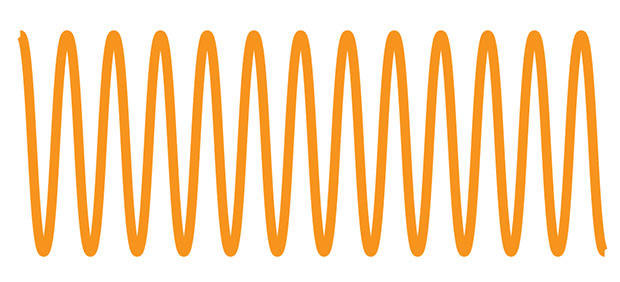
Acoustics is the interdisciplinary science that deals with the study of all mechanical waves in gases, liquids, and solids including topics such as vibration, sound, ultrasound and infrasound. A scientist who works in the field of acoustics is an acoustician while someone working in the field of acoustics technology may be called an acoustical engineer. The application of acoustics is present in almost all aspects of modern society with the most obvious being the audio and noise control industries.
Reflections
Reflected sound strikes a surface or several surfaces before reaching the receiver. These reflections can have unwanted or even disastrous consequences. Although reverberation is due to continued multiple reflections, controlling the Reverberation Time in a space does not ensure the space will be free from problems from reflections.
Reflective corners or peaked ceilings can create a “megaphone” effect potentially causing annoying reflections and loud spaces. Reflective parallel surfaces lend themselves to a unique acoustical problem called standing waves, creating a “fluttering” of sound between the two surfaces.
Reflections can be attributed to the shape of the space as well as the material on the surfaces. Domes and concave surfaces cause reflections to be focused rather than dispersed which can cause annoying sound reflections. Absorptive surface treatments can help to eliminate both reverberation and reflection problems.
Parallel Surfaces
Parallel Walls
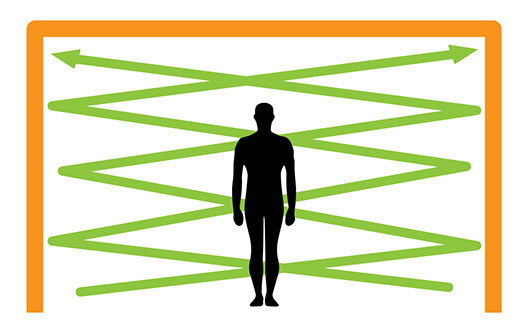
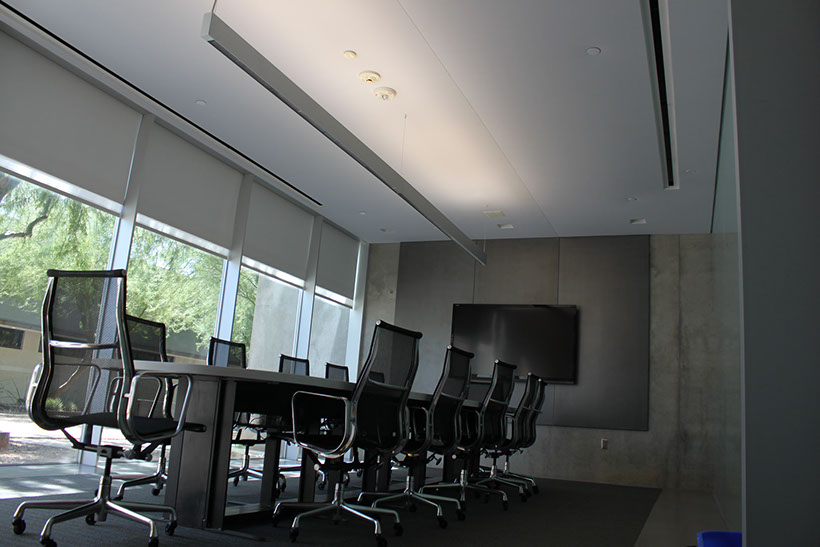
Parallel Ceilings
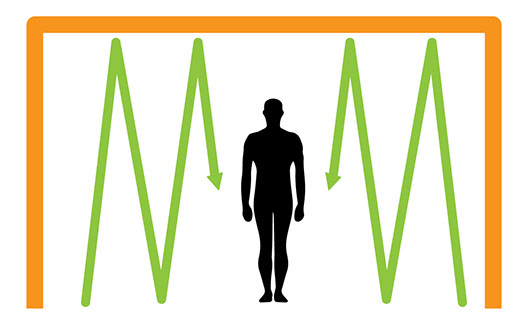
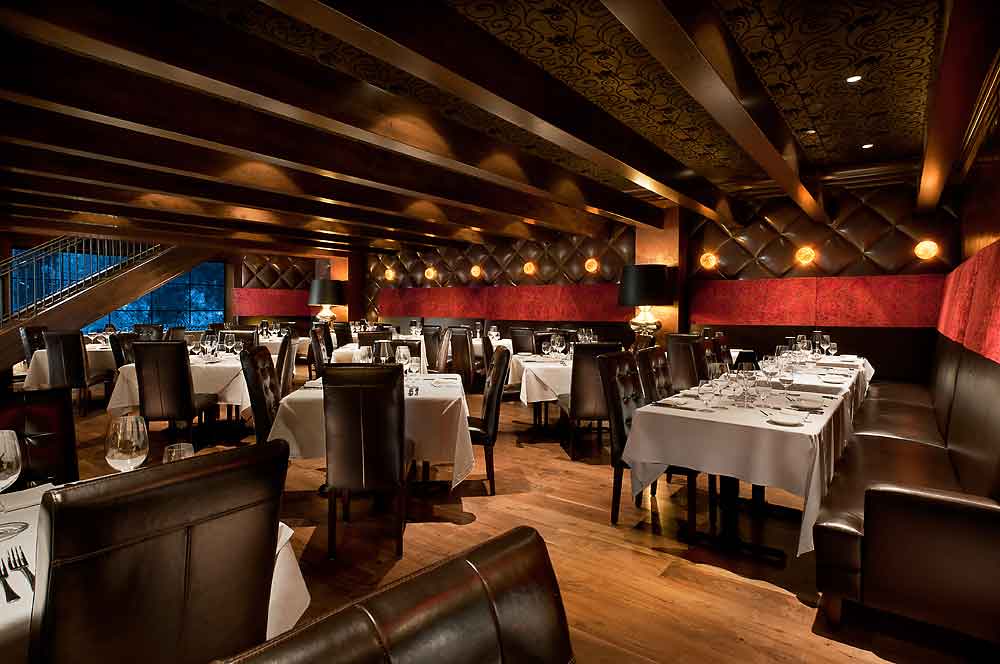
Pitched Ceiling
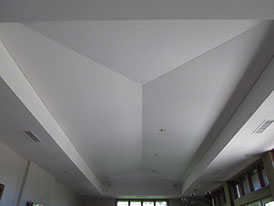
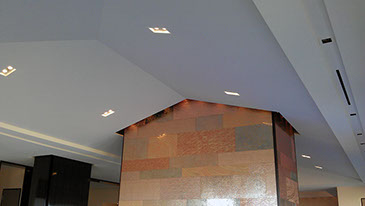
Dome Ceiling
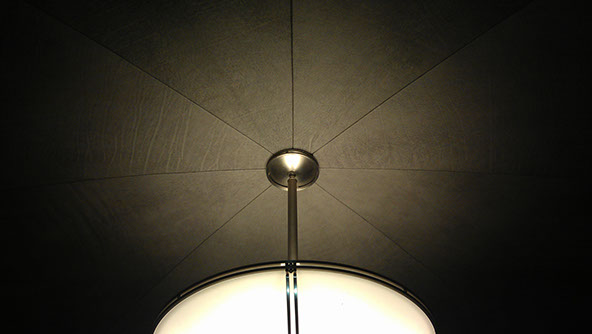
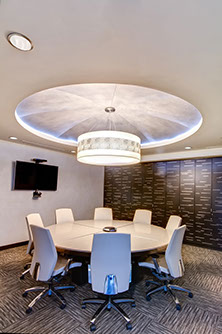
Concave Wall
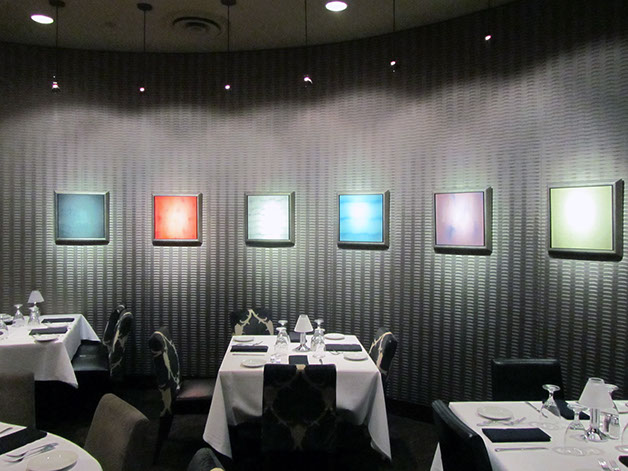
Reverberation
In an enclosed space, when a sound source stops emitting energy, it takes some time for the sound to become inaudible. This prolongation of the sound in the room caused by continued multiple reflections is called reverberation.
Reverberation time plays a crucial role in the quality of music and the ability to understand speech in a given space. When room surfaces are highly reflective, sound continues to reflect or reverberate. The effect of this condition is described as a live space with a long reverberation time. A high reverberation time will cause a build-up of the noise level in a space. The effects of reverberation time on a given space are crucial to musical conditions and understanding speech. It is difficult to choose an optimum reverberation time in a multi-function space, as different uses require different reverberation times. A reverberation time that is optimum for a music program could be disastrous to the intelligibility of the spoken word. Conversely, a reverberation time that is excellent for speech can cause music to sound dry and flat.
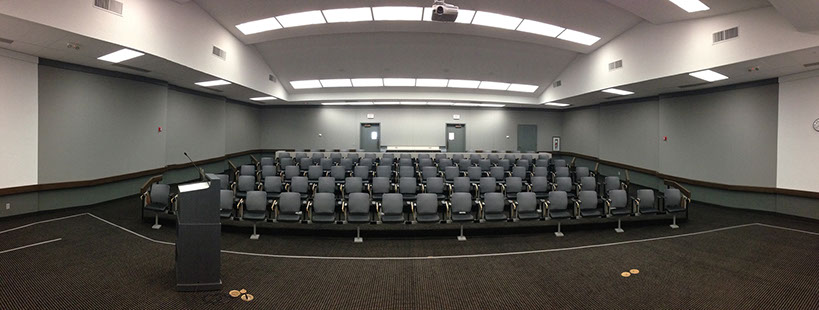
Absorption is the solution!
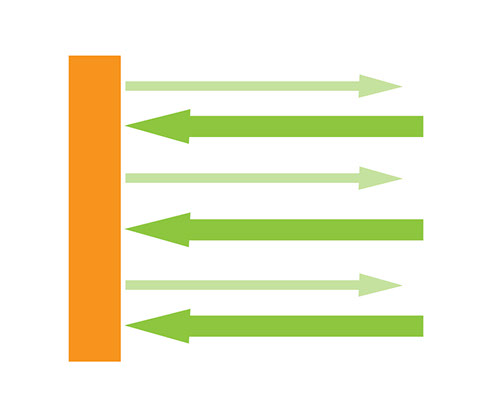
Acoustic absorption refers to the process by which a material, structure, or object takes in sound energy when sound waves are encountered, as opposed to reflecting the energy. Part of the absorbed energy is transformed into heat and part is transmitted through the absorbing body. The energy transformed into heat is said to have been 'lost'.
NRC (Noise Reduction Coefficient)
The Noise Reduction Coefficient (NRC) is a single-number index for rating how absorptive a particular material is. Although the standard is often abused, it is simply the average of the mid-frequency sound absorption coefficients (250, 500, 1000 and 2000 Hertz rounded to the nearest 5%). The NRC gives no information as to how absorptive a material is in the low and high frequencies, nor does it have anything to do with the material’s barrier effect (STC).
Fabric Wall Concepts - 2443 West 12th St, Suite 2 - Tempe, Arizona 85281
(480) 945-6857